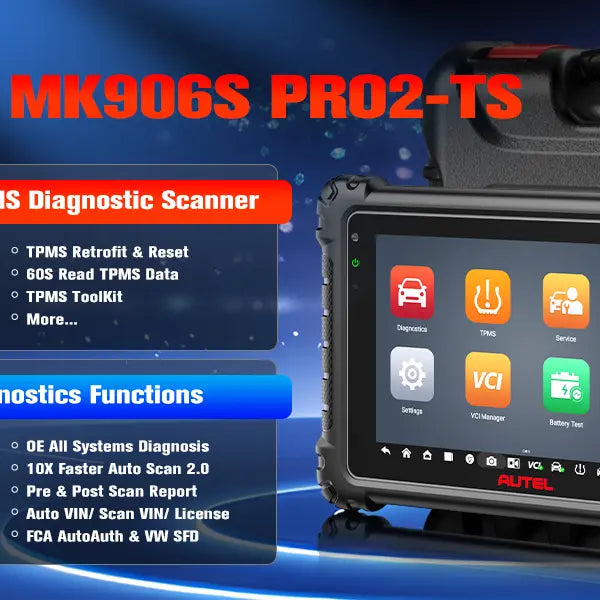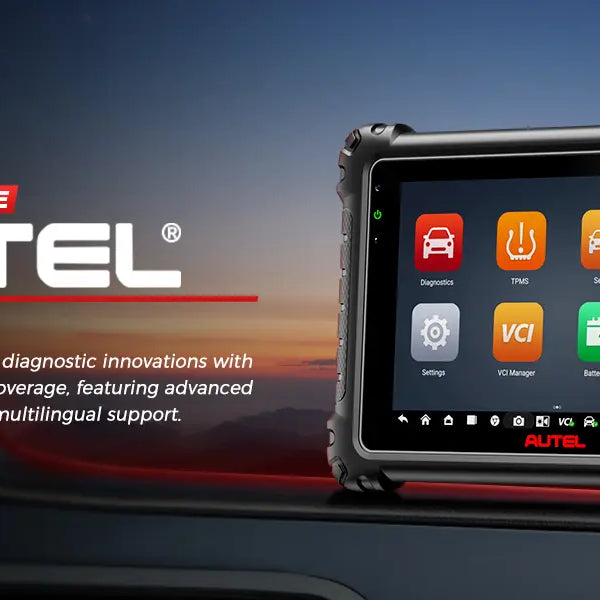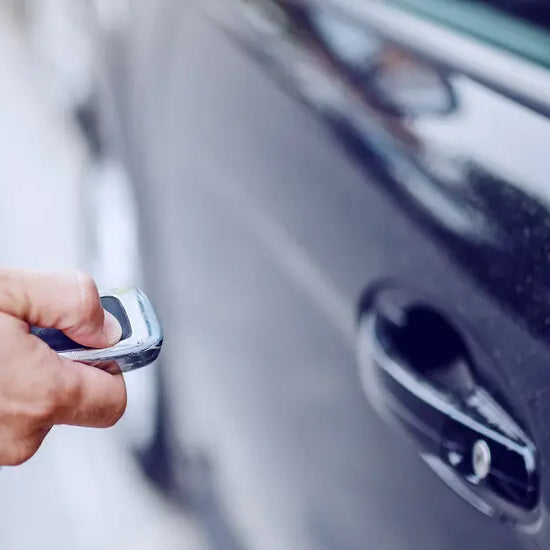An OBD2 scanner is an essential tool for any car owner or DIY mechanic. It helps identify vehicle issues before heading to the repair shop and even allows you to fix minor problems yourself. This guide will walk you through setting up your OBD2 scanner, using its features, and troubleshooting common issues. If you're using an Autel OBD II scanner, the steps below apply directly.
Getting Started: Set Up Your OBD2 Scanner
Locate the OBD2 Port: The first step is finding the OBD2 port in your vehicle. Typically, it’s located under the dashboard on the driver’s side. In some cars, it may be in the center console or glove box. The port is trapezoid-shaped with 16 pins. If you're unsure, refer to your vehicle's manual.
Connect the OBD2 Scanner: Plug your OBD2 scanner into the port. Some models will power on automatically, while others may require you to switch the ignition to the "on" position (no need to start the engine). For example, if you're using an Autel MD906PRO OBD II scanner, most models will automatically detect your vehicle upon connection.
Wait for the Scanner to Sync: Once connected, the OBD2 scanner will establish communication with the vehicle’s ECU. Messages like "Connecting" may appear. After syncing, the main menu will display.
Running Basic Diagnostics
Access the Diagnostics Menu: Navigate to the "Diagnostics" or "Scan" option on your OBD2 scanner. Some scanners auto-detect your vehicle; others require manual input. With an Autel OBD II scanner, you often have the advantage of automatic VIN recognition for faster setup.
Read Trouble Codes: Select "Read Codes" on the OBD2 scanner to retrieve any stored Diagnostic Trouble Codes (DTCs). These codes indicate specific problems within your vehicle's systems:
- P-codes (Powertrain): Engine, transmission, emissions
- C-codes (Chassis): ABS, steering
- B-codes (Body): Airbags, lights
- U-codes (Network): Communication errors
Understand the Codes: Some OBD2 scanners show code definitions (e.g., P0300: Random Misfire). If not, use the scanner's built-in lookup tool or search online. An Autel OBD II scanner typically provides definitions for most codes automatically.
The Autel MS309 OBD2 scanner shows clear explanations for trouble codes.
Clear Warning Lignts and Erase Codes
Clear Codes: After resolving a problem or for testing purposes, choose the "Clear Codes" option on the OBD2 scanner to reset warning lights. Keep in mind that clearing codes doesn’t fix the problem—the light will return if the issue persists.
Follow-Up Scan: Run another scan using the OBD2 scanner after clearing to confirm no new or recurring codes are present.
Unlocking Advanced Features
Live Data Monitoring: Many OBD2 scanners display real-time data like RPM, fuel trim, coolant temperature, and O2 sensor readings. This is useful for diagnosing intermittent or performance issues. An Autel OBD II scanner allows detailed graphing of live data for advanced analysis.
Bi-Directional Control: Advanced OBD2 scanners offer bi-directional control, allowing you to activate components (e.g., fuel pump, ABS test) for in-depth diagnostics.
Special Functions: Higher-end OBD2 scanners include features such as:
- Oil light reset
- Battery registration
- Throttle reset
- Electronic parking brake (EPB) service
- Key programming
Most Autel OBD II scanners support these functions, making them ideal for at-home maintenance or professional use.
Most Autel OBD II scanners offer bi-directional control functions.
Pro Tips for Better Results
Don’t Ignore Persistent Codes:
If a code keeps returning, the issue likely isn’t resolved. Don’t just erase it—investigate further with your OBD2 scanner.
Use Freeze Frame Data:
This feature on your OBD2 scanner captures a snapshot of vehicle data when a fault occurs, helping you understand the conditions that triggered the code.
Record Your Scans:
Save or export diagnostic data from your OBD2 scanner for future reference or to share with a mechanic. This is especially helpful if you manage multiple vehicles.
Most Autel OBD II scanners include a freeze frame data reading function.
Troubleshooting Scanner Problems
No Connection:
Ensure the OBD2 scanner is fully inserted and the ignition is in the correct position. Check compatibility with your car model. Most Autel OBD II scanners support a wide range of vehicles from 1996 and newer.
Note: Before purchasing, please check with customer service to confirm that the OBD2 scanner is compatible with your vehicle for diagnostic use.
No Codes Found:
If your check engine light is on but no codes appear, the issue might involve manufacturer-specific codes your OBD2 scanner doesn’t support.
Codes Won’t Clear:
Some codes require the issue to be fixed before they can be erased. Also, verify the OBD2 scanner's battery and ignition settings.
Conclusion
Using an OBD2 scanner empowers you to manage your vehicle’s health with confidence. Whether you're a DIY enthusiast or just want to understand what your check engine light means, an OBD2 scanner is a powerful tool that can save time and money. If you're looking for a reliable and feature-rich device, an Autel OBD II scanner is a top choice among professionals and hobbyists alike.
FAQs
Q: Can I use an OBD2 scanner on any car?
A: Most OBD2 scanners work on vehicles made after 1996 in the U.S., but compatibility can vary. Autel OBD II scanners generally cover a broad range of makes and models.
Q: Will clearing a code fix my car?
A: No. Clearing codes removes warning lights but doesn’t solve the underlying issue.
Q: Are Bluetooth scanners reliable?
A: Yes, many Bluetooth OBD2 scanners are accurate and convenient to use.






